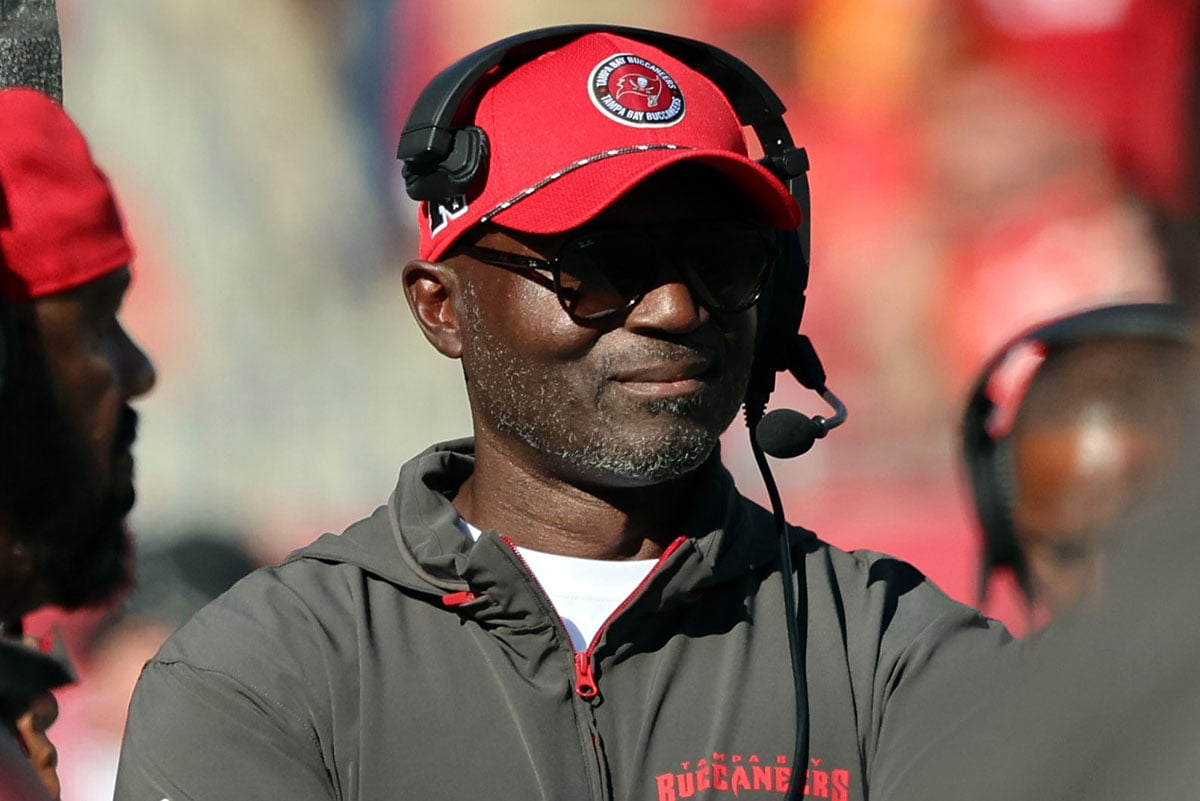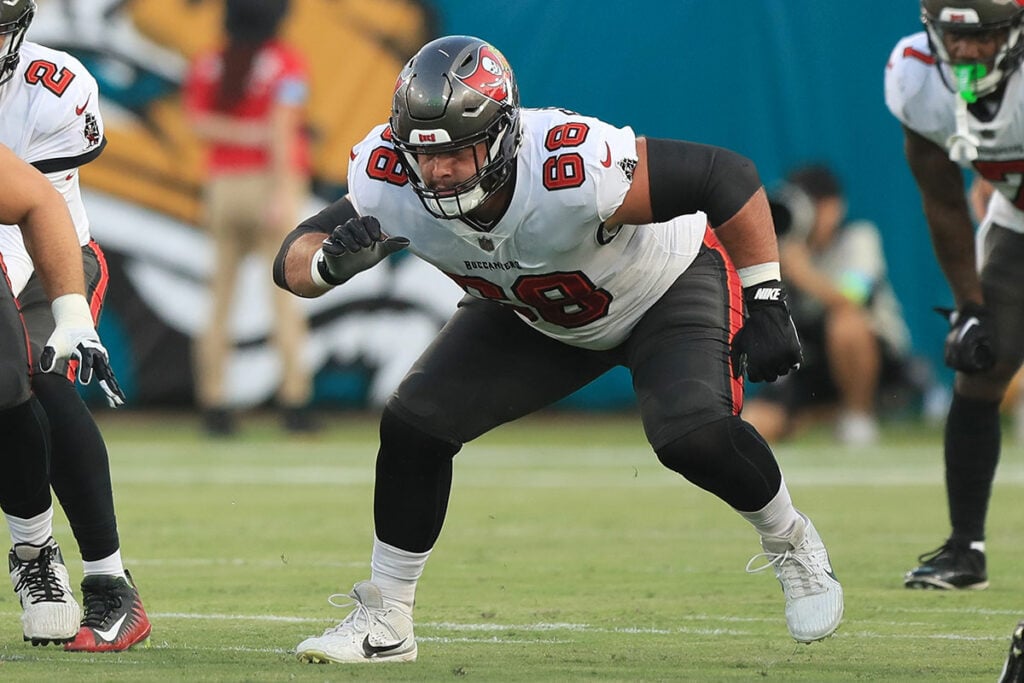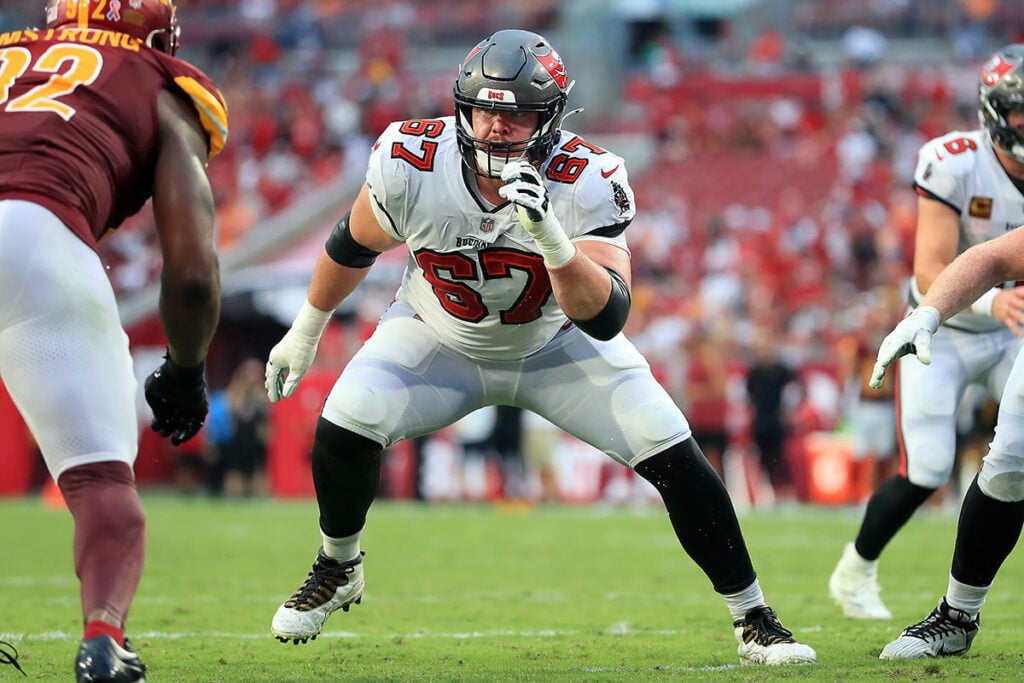The Bucs defense faced a unique challenge on Sunday against the Chargers.
Los Angeles has eschewed traditional offensive philosophies this year. They are 32nd in the NFL in using 12 personnel (one running back and two tight ends). They have only used 13 personnel (one back, three tight ends) one time all year headed into yesterday’s matchup with Tampa Bay.
But they are fifth in 21 personnel (two backs, one tight end) this season, using it 17% of the time and 127 times overall.
And this isn’t your fun, two explosive backs 21 personnel Bucs fans might be used to in Liam Coen’s “Pony” package.
No this is smash-mouth, oversized fullbacks, extra offensive lineman disguised as a tight end, 21 personnel.
The Chargers’ interesting grouping includes 6-foot-4, 296-pound backup defensive lineman Scott Matlock and 6-foot-4, 285-pound tight end Tucker Fisk. With known “run the damn ball” aficionado Greg Roman calling the plays, this package is designed to primarily overwhelm opposing defenses with mass and movement on the ground.
Hell, just for fun Roman would say, “Screw the second receiver, lets go 22 with two backs and two tight ends!”
(*I have no proof Greg Roman ever actually said this, but it’s nice to think he did.)
Bucs Turn To Unlikely Grouping
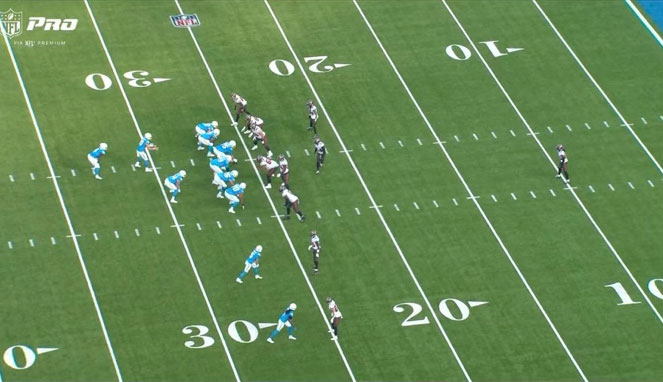
Bucs’ 6-man D-line vs. Chargers
The Chargers ran this package less than 10 times all game. But it was important for Bucs head coach and defensive play-caller Todd Bowles to have an answer for it. And an answer he did have.
It came from an unlikely grouping of his own. Bowles and the Bucs matched personnel with a 6-1-4 defensive structure that featured four interior defensive linemen, two outside linebackers, one inside linebacker and four traditional defensive backs.
The Bucs stacked the defensive line with six players in defensive tackles Vita Vea, Calijah Kancey, Logan Hall and Greg Gaines, as well as outside linebackers Yaya Diaby and Anthony Nelson. This helped Tampa Bay match size at the point of attack and prevent the Chargers from gaining any true ground downhill.
Behind those six the Bucs paired linebacker Lavonte David with safety Ryan Neal in the box to create a true 6-2 front. This put a ton of pressure on Bucs’ cornerbacks Jamel Dean and Zyon McCollum to have to play match coverage on the Chargers’ receivers on the outside with just safety Kaevon Merriweather patrolling the deep backfield.
Call Back To A Successful Super Bowl Recipe
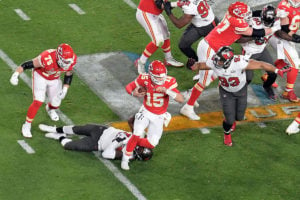
Bucs OLB Shaquil Barrett and Chiefs QB Patrick Mahomes – Photo by: Cliff Welch/PR
Todd Bowles has been credited with one of the all-time great defensive gameplans in a Super Bowl when he used a two-high Cover 2 to help the Bucs win convincingly over Andy Reid and Patrick Mahomes in Super Bowl LV, 31-9. Tampa Bay held Kansas City to just nine points enroute to the franchise’s second world title. But it was another Super Bowl defensive masterclass that may have inspired this gameplan.
Just two years prior the Patriots and legendary head coach Bill Belichick had to devise a way to stop the high-powered Rams offense in Super Bowl LIII. Belichick’s solution to shutting down the Rams’ outside zone base offense was to run a 6-1 front that made it more difficult for Los Angeles to gain the outside edge or climb to the second level.
Bowles decided to try a similar philosophy against the Chargers on Sunday. Six times he matched the Chargers heavy package with their 6-1-4 package. Los Angeles only netted 16 yards on those six plays as the Bucs were able to bottle up the Chargers run game and limit their pass attempts to minimal gains.
Reserve safety Ryan Neal, who was elevated from the practice squad, was particularly active in these situations, flowing to the ball in both the run and pass game, registering three tackles and limiting yards after catch.
As I pointed out a few days ago, despite a multitude of injuries to his back seven Bowles is pulling almost any lever he can think of to keep the Bucs defense good enough to get the team into and through the playoffs.
Will it be enough? Time will tell.
Josh Queipo joined the Pewter Report team in 2022, specializing in salary cap analysis and film study. In addition to his official role with the website and podcast, he has an unofficial role as the Pewter Report team’s beaming light of positivity and jokes. A staunch proponent of the forward pass, he is a father to two amazing children and loves sushi, brisket, steak and bacon, though the order changes depending on the day. He graduated from the University of South Florida in 2008 with a degree in finance.

